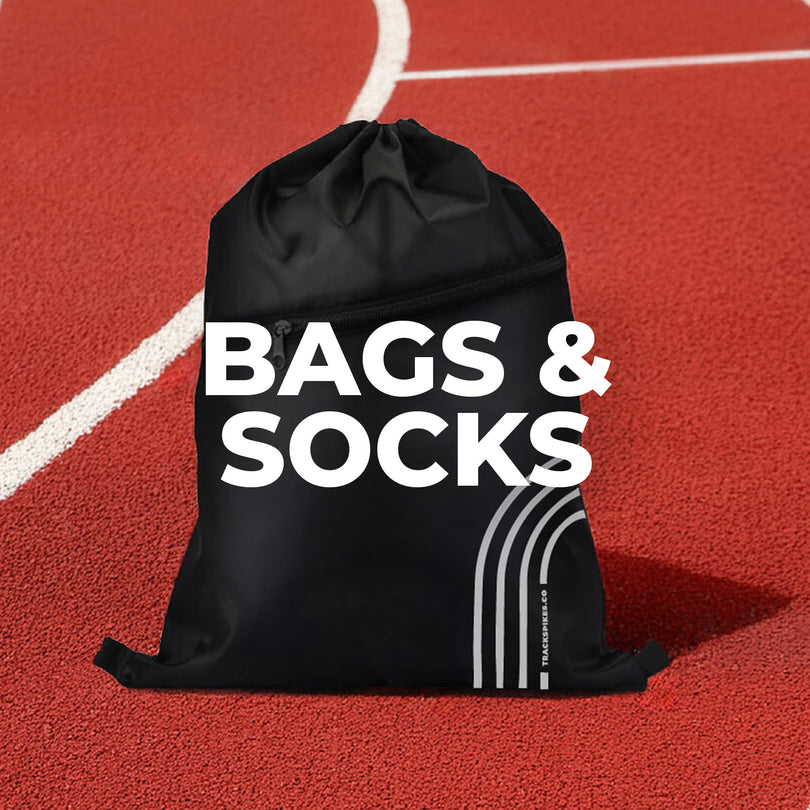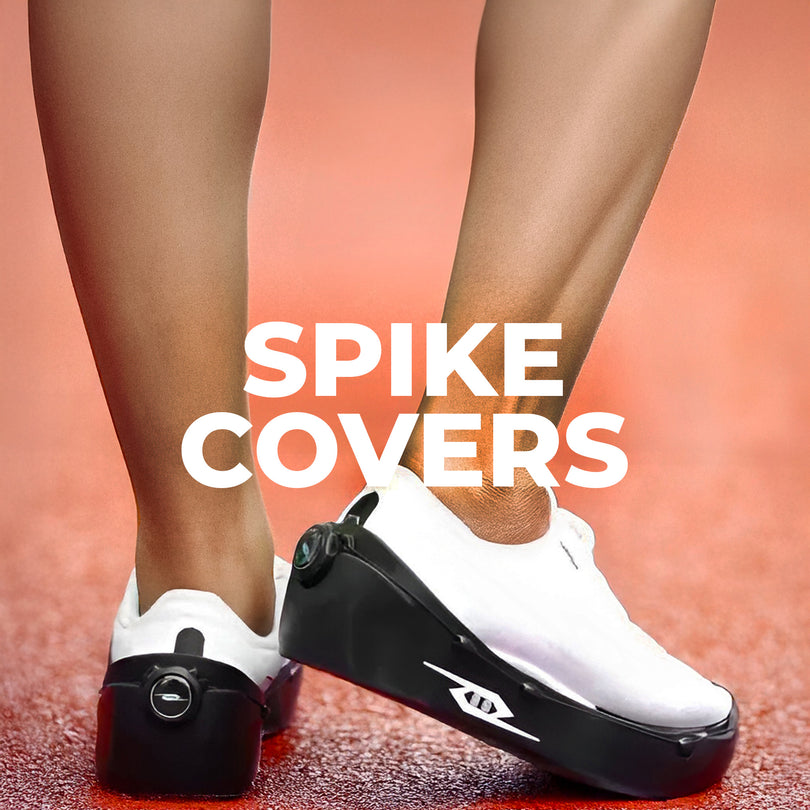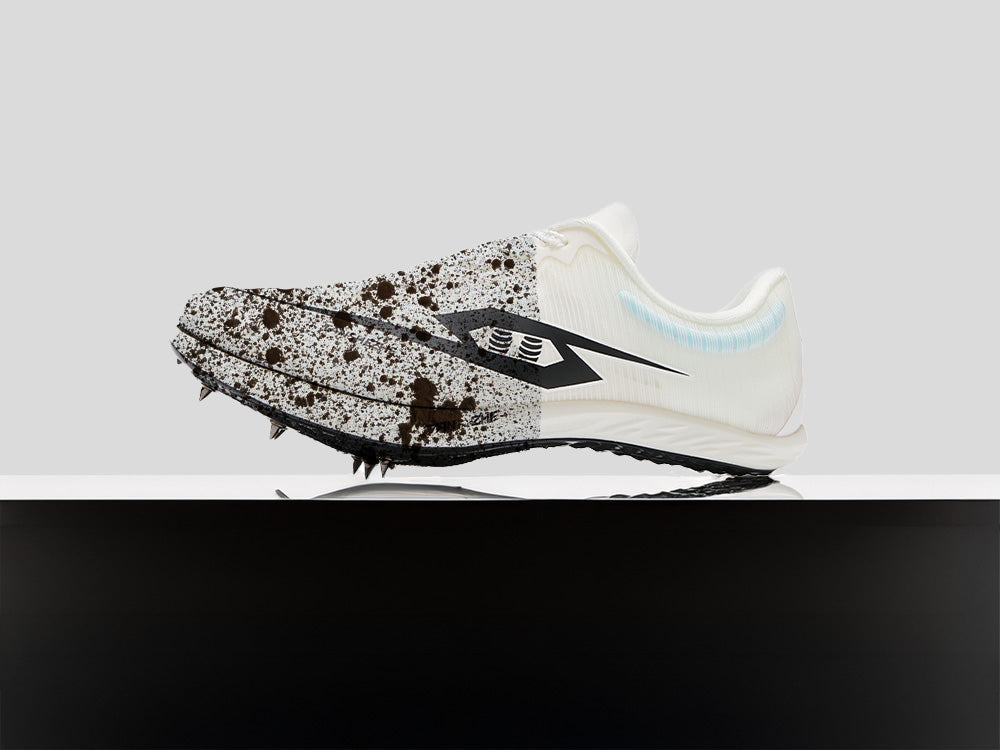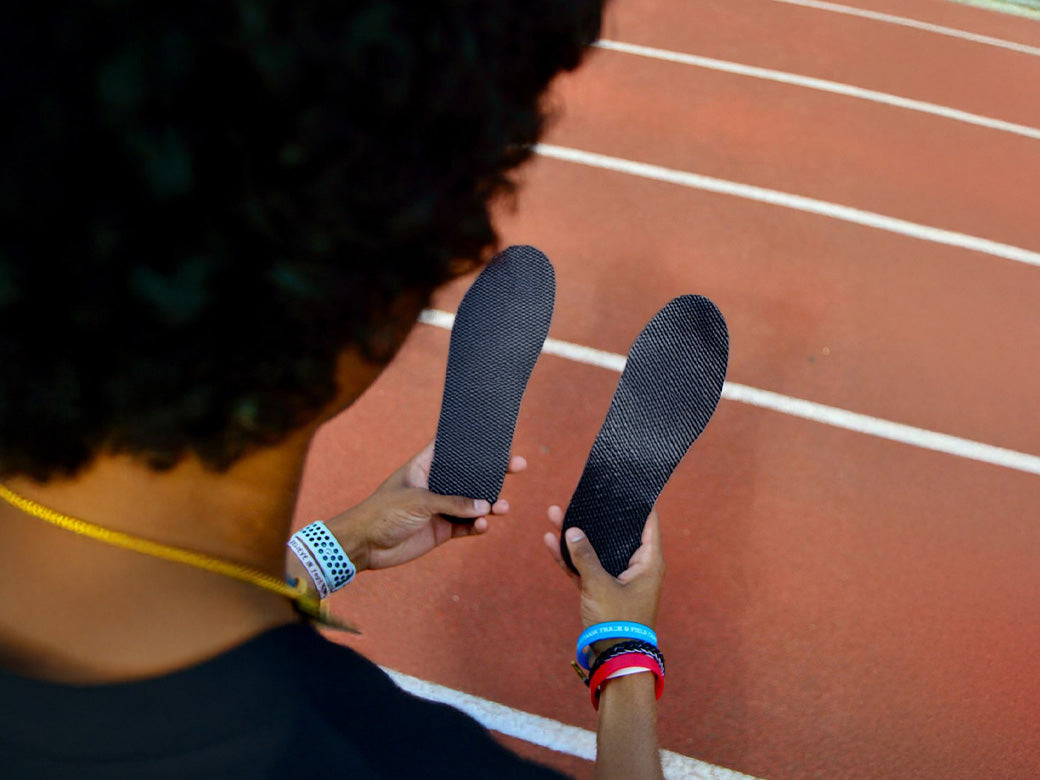Track spikes are crucial to an athlete’s gear, especially for sprinters and middle-distance runners. Proper care of your spikes can ensure better performance on the track and also help to extend the life of the shoes.
Neglecting your spikes can lead to premature wear and tear, hindering your training, and your performance on race day. Here are some key tips to care for your spikes properly and get the most life from every pair.
Clean Them After Every Use
Dirt, grass, and rubber debris from the track will accumulate around the spikes if it isn’t removed, potentially reducing their grip on all surfaces. Follow these steps after every training session or race:
- Remove debris: Gently clean the spike plate and sole with a small brush or old toothbrush.
- Wipe down the upper material: Use a damp cloth to remove dirt, mud, and stains from the shoes' upper materials.
- Avoid soaking them: Track spikes are lightweight and made from breathable materials, so it is best to avoid immersing them in water to prevent damage to the materials, and the bonding agents holding them all together. Washing machines, and especially dryers, should be avoided as they will shorten the life of your spikes.
Check and Replace Spikes Regularly
The metal spike pins on the bottom of track shoes are the most critical component for traction. Worn-down spikes can reduce grip and affect performance, both in training and during races. If the spikes are worn out, you won’t get the full potential from your shoes.
- Inspect the spikes: Spikes should be checked every few training sessions. If you notice significant wear, they should be replaced.
- Spike wrench: You should always have a spike wrench handy (usually in your track bag) to tighten or replace spikes, as necessary.
- Spare Spikes: Keep extra spikes of various lengths in your bag as well. This will allow you to change them according to track conditions and event type, as well as if you notice some are worn out before an event.
Store Them Properly
How you store your spikes can affect how long each pair will last.
- Dry before storing: Always let your spikes air out after training or races to help prevent mold and odor. Avoid leaving them in a damp gym bag for extended periods.
- Cool, dry environment: Store your spikes in a cool, dry place. High temperatures or direct sunlight can cause the materials to warp or degrade over time.
- Separate storage: Keep your spikes separate from other items to avoid damaging the upper material and spike plate. If a spike hole gets damaged, you may not be able to get a spike to thread back into the damaged hole again.
Rotate Between Different Shoes
If you are on the track training regularly, it’s a good idea to alternate between different spikes or to use a separate pair of spikes for training and competition. This helps prevent the overuse of one pair, which can help to extend their lifespan.
For regular track workouts, some runners may use a pair of trainers or lightweight running shoes and save their spikes for races and speed workouts.
Avoid Wearing Spikes on Hard Surfaces
Track spikes are designed for track surfaces, grass, or turf. Wearing them on concrete, asphalt, or other hard surfaces can damage not just the spikes, but also the shoe’s structure.
If you don’t have time to change shoes between events, consider buying some spike protectors. These slip over the lower part of your spikes and allow you to walk on hard surfaces without damaging your spikes or the surface you’re walking on.
Replace Your Spikes When Necessary
Even with proper care, track spikes don’t last forever. Check your spikes often for signs of excessive wear, such as:
- Worn-out spike plates that no longer hold spikes securely.
- Cracking or tearing in the upper material.
- Loss of support during training or races.
- Discomfort on your feet as the inside of the shoes begins to break down.
When you notice any of these signs your track spikes should be replaced. Continuing to run on worn-out spikes will reduce performance, and can also lead to injuries.
Track spikes are a critical investment for any runner aiming to perform at their absolute best. By following these care tips, you can ensure that your track spikes stay in good condition throughout the season. Proper maintenance will not only help extend the life of your spikes but also help you perform at peak performance on race day.

















